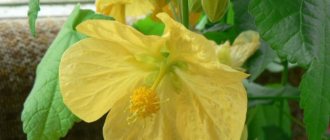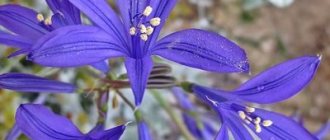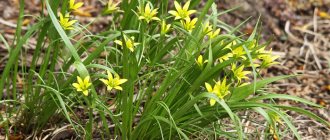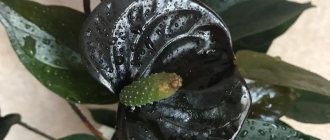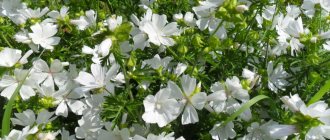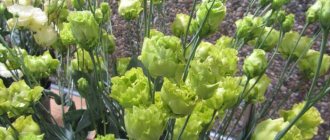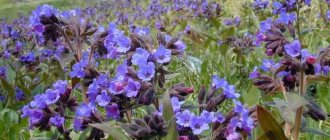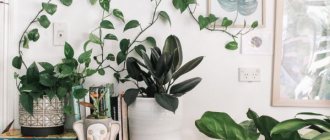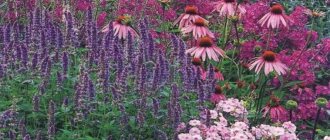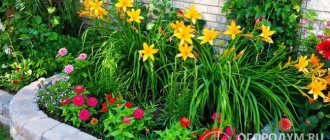Why do they grow flowers at home?
Beautiful indoor plants are simply necessary for a person. Without them, life will lose its bright colors and good mood. For caring for flowers and caring for them, beautiful plants will always respond to a person with love, beauty and tenderness. Flowers help create coziness in the home, and on special days - a unique holiday atmosphere.
Any plants, including indoor flowers with yellow flowers, have a unique feature of purifying the air in the room. It is saturated with oxygen and the amazing aroma of flowers. This lifts the mood and makes the person feel healthy.
Lachenalia
Most gardeners love lachenalia because it blooms during the winter months. At this time, clusters of yellow-orange flowers, similar to elongated tubes, appear on thin stems.
The problem is that lachenalia requires constant coolness (in summer no more than +12 °C, and in winter up to +18 °C) and good lighting all year round. If these two conditions are provided, the plant will definitely delight you with long and beautiful flowering. Otherwise, the flower will begin to wither, and you will never see flower stalks appear.
Maple abutilone
This indoor plant can delight with its flowering until late autumn. Its flowering fades as daylight hours shorten. In winter, the flower enters a dormant period and stops blooming. But if you continue to water regularly and install additional lighting lamps, the maple will not stop blooming in winter.
An indoor flower with yellow flowers, whose name is abutilon, has an interesting feature. The leaves of the indoor tree are similar to maple leaves. Hence the name. It is very easy to care for the flower: observe the frequency of watering and watch the growth. If you don’t like the shape of the flower, pinch off the excess shoots. That's all. Abutilone is a natural or hybrid plant. The latest varieties are distinguished by more diverse shapes and shades of flowers.
Types and varieties
Bright yellow flowers, the names of which are known to many, will certainly decorate any yard, garden, or flower bed. On the stormiest and rainiest day, they will bring a piece of sunshine into the world, making it brighter and more attractive. Nowadays, for amateur and professional gardeners there is a large selection of ornamental plants with yellow inflorescences.
Yellow flowering annuals
The lifespan of garden plants is one of the most important indicators. Of course, it is always more profitable and calmer if perennials are planted in the flowerbed, and there is no need to plant every year. But there are such beautiful yellow annuals:
- Calendula is not usually used in bouquets. But how pleasing these little suns are to the eye, especially in late autumn, when there is no one left in the garden. But marigolds and marigolds, like stalwart tin soldiers, raise their heads to the gloomy autumn sky. In Asian countries they like to be woven into wedding floral decorations. Calendula is a self-seeding plant, so in the spring you can expect a lot of seedlings that will need to be deflated a little. In addition to decorating paths, slides and flower beds, marigolds are known for their healing properties. Infusions, ointments, and decoctions based on calendula are widely used in cosmetology and medicine.
- Sunflower is loved by everyone not only for its economically beneficial properties. The two-meter giant, which came to us from Mexico, will invariably attract the eye. And it doesn’t matter whether it’s a single flower or an endless field of sunflowers. Famous poets and artists repeatedly turned to him in their work. Sometimes a sunflower is associated with a person who always turns his head to follow the sun, and bows it in old age. By the way, even its Latin name means “sunny flower.” Breeding has created a large number of decorative sunflower varieties, the fruits of which are not used for food purposes.
- Elegant and graceful nasturtium will delight you with long-lasting flowering and will decorate any garden. The mocking faces of her flowers will definitely cause a reciprocal smile. In addition to growing in a flowerbed, nasturtium can be used to decorate gazebos and hedges. Modern varieties of this annual have both simple and double flowers. Few people know that all parts of this plant are edible: flowers, leaves, and shoots.
- Sunny flowers and carved silver foliage of Eschscholzia (California poppy) will be a pleasant decoration for any front garden. The plant is very unpretentious, blooming throughout the summer.
- The low gazania - South African chamomile - has rightfully gained popularity among gardeners. Now you can count about 40 varieties of gatsaniya of different shades, including yellow.
- Zinnia, whose decorative properties have long been appreciated by specialists and amateurs, is grown through seedlings. But the effort is worth it: both small-flowered zinnia and a plant with large flowers will definitely decorate the site.
- Cosmea is a “daisy” from childhood. Probably, in every flowerbed or dacha in our childhood, these cute white and pink flowers grew. But selection is a dynamic science. In recent years, magnificent orange-yellow varieties of cosmos have appeared, including those with double flowers. Cosmidium is a low-growing variety of cosmos, with iridescent flowers: it seems that dew drops are “playing” on the petals.
- Evening primrose, or primrose, is a biennial. Bright yellow large flowers create a continuous carpet and look very impressive in group plantings. When growing it, it is necessary to drain the area so that the plant does not die from stagnation of water.
- Marigolds of various colors, combinations and sizes are what will provide an elegant garden at any time of the year. Even if nothing else grows in this garden. In India, they are grown in huge quantities and sold in markets. They are woven into wreaths, decorate homes and used in food as a spice. The cosmetology and alcoholic beverage industry also appreciated the quality of the essential oils released by these sunny flowers.
Clivia
These yellow indoor flowers are often found in the collections of gardeners who love plants for their interesting structure. The dark green leaves form a lush rosette, which emphasizes the amazing beauty of the inflorescence. It contains from ten to twenty lush flowers of a yellow or orange hue.
Clivia is a light-loving plant. But she does not like direct sunlight and high indoor temperatures. For comfortable growth, twenty-two to twenty-five degrees of heat in the summer is enough. During winter dormancy, the flower should be placed in a room with a temperature of fourteen degrees above zero.
The meaning of color depending on the type of plant
The meaning of the buds, colored in amber and straw shades, depends on the type of plant:
- Lemon daffodils and mimosas represent spring, warmth and sunshine. These representatives of the flora do not carry negativity. Giving them to a loved one will only strengthen the connection between people.
- A sunny chrysanthemum is considered a wish for wealth if presented to friends. However, it is better not to give this flower to lovers - in love it symbolizes rejected feelings.
- Sunflowers are suitable for cheerful and cheerful people. An armful of sunflowers will express love and warm feelings.
- Carnations are a symbol of reconciliation. A composition of golden carnations should be chosen if the donor wants to take a step forward.
- Roses will become a sign of respect and friendship. Such bouquets are usually presented to teachers or idols as a sign of admiration and gratitude.
- Lemon tulips symbolize pure and immaculate sympathy for the chosen one. Usually tulips of this shade are given to those girls with whom relationships are still innocent.
- The yellow lily is the only flower that has a negative meaning. In flower language, it means deception and frivolous intentions.
Pachistachis
An indoor flower with yellow flowers, the photo of which is presented below, is called pachistachis. It resembles fireworks. The bright yellow flowers look like candles pointing upward. The dark, fleshy leaves add to their beauty. Gardeners love to grow this plant at home. A flower can complement and decorate the interior of any corner in the room.
Pachistachis does not like drafts, but prefers a cool atmosphere in a ventilated room. It is better to place it away from heating devices, in a corner with diffused light. The flower should be watered moderately, not overwatered. For this purpose, settled water is used. Fertilizer for indoor flowering plants is used as periodic feeding. If you follow all these simple requirements when caring, the flower will bloom magnificently for a long time.
Aphelandra
The yellow flowers of aphelandra look more like an exotic fruit, but this is not its only feature. The foliage of the plant has light veins, which give it a very exotic look, for which aphelandra is valued by most gardeners.
But caring for this flower is very difficult. In summer, aphelandra needs frequent feeding, bright but diffused lighting, and abundant watering. In this case, you need to ensure that the soil does not turn into a swamp.
In winter, watering and fertilizing will have to be reduced by 2-3 times, and a phytolamp will have to be installed on the windowsill.
Guzmania
This is a bright, evergreen ornamental plant. Indoors it grows up to forty centimeters in height. The flower has an interesting structure.
A bright rosette formed from long narrow leaves is a cup-shaped moisture storage for the plant. A bract crowned with an inflorescence grows from the center of the rosette. It contains beautiful yellow flowers.
Spring-blooming “suns”
The long-awaited “spring flowers” are the first to open the flowering season.
In the summer, when there are so many bright colors around, you are unlikely to pay attention to them. But after a long winter, even tiny buds can cause awe and tenderness
Of particular delight are the yellow flowers of perennials, which most people associate with cheerful sunbeams.
Primrose
A representative of the primrose family Primulaceae, she is a forest dweller by nature. She prefers to live under the canopy of bushes and trees. She feels comfortable in alpine meadows and along the banks of deep rivers.
The perennial forms compact bushes 10-20 cm high. Primrose leaves, which have a heart-shaped elongated shape and a fleecy surface, form a kind of rosette. Many arrows with small flowers protrude from the center of the rosette. The yellow flowers of the perennial can be either a single color or a combined color, for example, interspersed with contrasting shades.
The following types are most widely used for decorating flower beds:
- "Primula acaulis or Primula vulgaris" is a plant with ruffled dark green foliage and soft yellow five-petaled flowers.
- "Primula chinensis" is a Chinese hybrid, reaching a height of 35 cm. The rosette of the plant is formed from oval leaves with jagged edges and topped with large lemon-colored inflorescences.
- "Primula kewensis" is a herbaceous perennial with heart-shaped foliage and umbellate inflorescences of bright yellow flowers.
The varieties “Apollo” with double flowers of a lemon shade, “Bicolor Miranda” with two-color petals, “Silver Lace” with yellow flowers with a light edge are particularly decorative.
Adonis
Adonis is an infrequent guest in landscape design. The reason lies in the complexity of its reproduction. Otherwise, the plant is unpretentious in care and resistant to disease. It looks great when decorating garden paths, decorating rock gardens and edging lawns. In nature, adonis prefers to settle on the edges of forests and open areas of steppes.
The perennial forms slowly growing bushes up to 15 cm high with erect stems framed along the entire length by palmately dissected leaves. Between March and April, the stems are crowned with bright yellow 5-petalled flowers with a glossy surface. After flowering, the stems increase in length, increasing the green mass to 25-30 cm.
Hyacinth
A representative of the hyacinth family not only pleases the eye with its bright colors, but also enchants with its exquisite aroma. The herbaceous perennial has a bulbous rhizome, which gives rise to flowering stems 20 cm high. The stems are framed by squat linear leaves. Together with the flower, the height of the plant can reach about 40-50 cm. An erect peduncle can simultaneously include up to 35 miniature bells. They delight with flowering from the first days of April to mid-May.
In landscape design with yellow and orange colored petals, the following perennial varieties are most widespread:
- “City of Haarlem” - the plant forms flower stalks up to 30 cm high with large light yellow flowers.
- Yellow Hammer" is a late variety that produces large orange-yellow flowers that emit a delicate sweetish aroma.
- "Orange Boven" - miniature plants up to 20 cm high with drooping flowers of salmon and apricot shades with a lemon-yellow throat.
Tip: since yellow itself can excite the nervous system, the best way to relieve the feeling of tension when contemplating a plant composition is to dilute the sunny shades with calmer tones. Plants with buds in white, pink and blue shades are excellent for this purpose.
Doronicum
A perennial called kuzulnik or doronicum with spectacular yellow daisy-shaped flowers leaves few people indifferent. “Sunny daisies” can revive any plant composition. They look great in combination with plantings of daffodils, tulips, nivaria and irises.
A representative of the Asteraceae family has a straight, slightly branched stem framed by heart-shaped leaves on short petioles. Bright yellow daisies, reaching a diameter of 5-10 cm, are collected in lush inflorescences-baskets.
The most decorative varieties are famous for: “Delecluza”, “Kolumny”, “Austrian” and “Eastern”.
Although Doronicum is considered a “secondary” plant, it can always be used both in the design of flower beds and in the decoration of fences and blank walls of utility fences.
Acanthocalycium
This is the name of a cactus with a spherical shape. These yellow-flowered indoor flowers come in about twelve varieties. Depending on this, the flowers have different shades. The older the cactus, the longer its stem with fifteen or twenty ribs.
The spines are small, with different shades: yellow, brown, white. The flowers are very beautiful, but small in size. Acanthocalycium is distinguished by the presence of scales on the tube. This cactus can be found in many homes and offices.
Primrose yellow
This is the only unpretentious plant on our list that even a beginner can handle growing. The only thing you need to consider when buying primrose is its need for low temperatures.
In summer, the flower will be comfortable only at +18-20 °C, and in winter - at +12-15 °C. Therefore, in warm months, it is recommended to leave the pot with the plant on the balcony or open window, and in winter choose the coolest places in the house.
Also, do not forget that watering the yellow primrose should be moderate, and the lighting is bright but diffused.
When choosing a flower, consider not only its appearance, but also your experience. A beautiful, but capricious plant that will be difficult to cope with is unlikely to bring pleasure and delight you with beautiful flowering.
Plants with yellow leaves
Plants with interesting leaves that are not the traditional green color always attract attention. They are used for decorative purposes to complement and decorate the interior of premises. Plants with leaves of different colors require good care: timely watering, pruning flowers and inflorescences when they wither, fertilizing. The owners select a whole range of measures to combat pests and diseases for each flower. They prepare soil in pots for their pets. These plants combine, as it seems, absolutely incompatible elements: flowers of unique beauty and leaves of interesting color and shape.
- In nature, there are indoor flowers with yellow leaves. One of them is codiaum or croton, as it is also called. Characterized by an erect stem with well-branched shoots. The leaves are large and leathery. Their length reaches thirty centimeters. The shape and color of the leaves are varied: yellow and green, red and variegated. This is a very impressive plant, used for interior decoration of residential and non-residential premises.
- Dracaena is a cold-resistant plant, so it will not grow well in a room with high temperatures. Optimal heat regime: in summer - fifteen to eighteen degrees, in winter - twelve to fifteen. To prevent dracaena leaves from drying out, they should be sprayed as needed. This plant does not require special care. It is transplanted very rarely, every five to ten years. The two-colored leaves make the plant especially decorative: green in the center, yellow at the edges.
Difficulties in home care
Plants with yellow flowers vary greatly in both appearance and growing habits. Some of them, such as primrose, begonia, jacobinia and glottiphyllum tongue-shaped, are unpretentious and do not require complex care. Even gardeners without much experience can grow them. Others, such as Jameson's gerbera, calceolaria and aphelandra, require special growing conditions and a lot of attention.
Caring for Jameson's gerbera involves:
- regular watering;
- feeding;
- annual transplants;
- periodically inspect the flower for pests.
For favorable growth, gerberas require a significant amount of sunlight, but without direct sunlight. In the summer, it is placed on a balcony (preferably glazed), because... Gerbera does not tolerate sudden changes in day and night temperatures. It is necessary to water the crop at least 2 times a week, more often in the hot season. Water for irrigation should not be cold. Every two weeks during the period of growth and flowering, the gerbera is fed with complex fertilizer.
The main thing in caring for calceolaria is constant high air humidity. To achieve this, young plants are covered with a cap and a container of water is placed nearby. Water the flower often, but little by little, with water at room temperature. Excess water from the pan is immediately poured out.
Calceolaria requires sufficient sunlight during the day, at least 8 hours. On cloudy days and in winter, artificial lighting is used to illuminate the flower.
Important! Calceolaria is contraindicated in direct sunlight, because they are the cause of burns and spots on the leaves.
The basic principles of caring for aphelandra are systematic feeding, maintaining high humidity in the room, sufficient lighting and a temperature of at least 16 degrees. Aphelandra is a plant native to the tropics, so it is important to bring its indoor conditions closer to natural ones.
